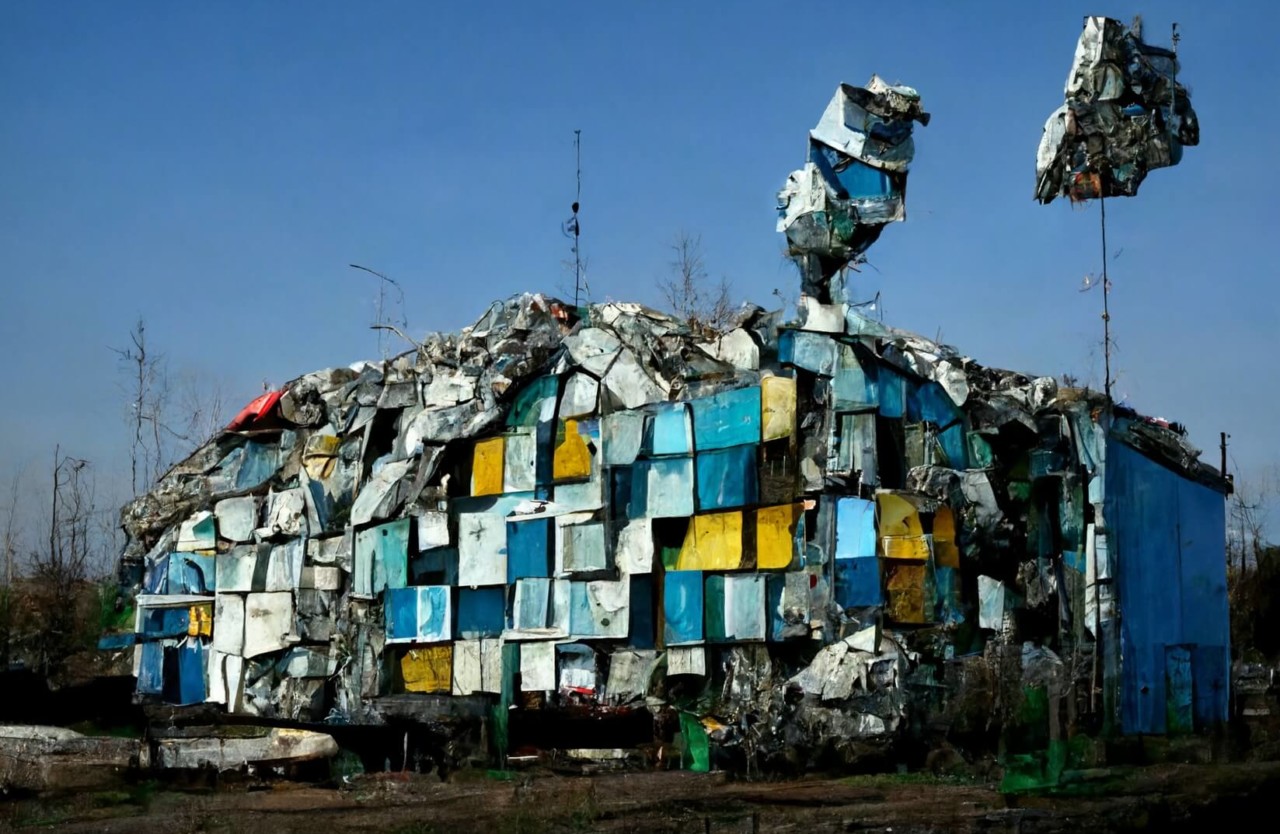A river so polluted it becomes cleansed—we are swimming amid trash. A land undisturbed by rainbows of gasoline—we are surrounded by toxic beauty ablaze.

This summer, I have been using Midjourney to make buildings that appear just out of the realm of possibility and just out of the realm of the present. The results are both highly articulated and highly amorphous. Looking at these buildings feels like gazing into a future where architecture materialisms are creatively formed out of layered refuse and plastics unremoved from sites of extraction and waste.
Many architects who use text-to-image AIs resort to often-backward-looking disciplinary concepts and styles or replicate/rehash their already underway aesthetic and formal projects. Their images showcase how the AI can generate soupy (but typically better) versions of those efforts. My prompts are much more basic—water towers, paper mills, and grain elevators, sometimes described purposefully or accidentally with typos (“towers” becomes “tours”)—and materially descriptive. In these images, plastic and metal materials are draped, bent, recycled, tattered, etc. The constructions are expanded and made to leak and drift when combined with rivers, waterfalls, and clouds. They always find themselves on a pile of dirt and trash.
Leah Wulfman is a carrier bag architect, an educator, a game designer, a digital puppeteer, and an occasional writer. Trained as an architect, they are currently the Walter B. Sanders Fellow at the University of Michigan’s Taubman College School of Architecture.